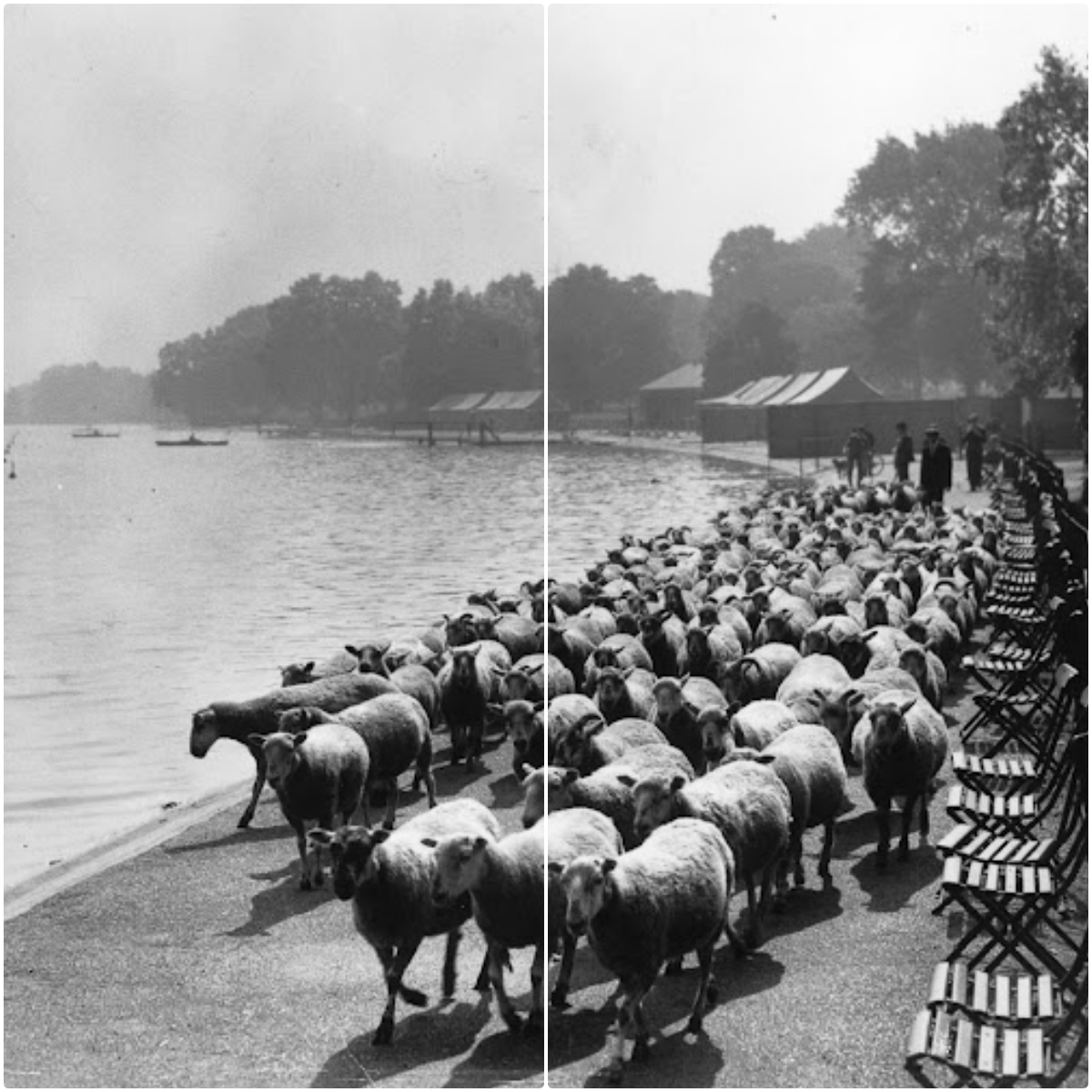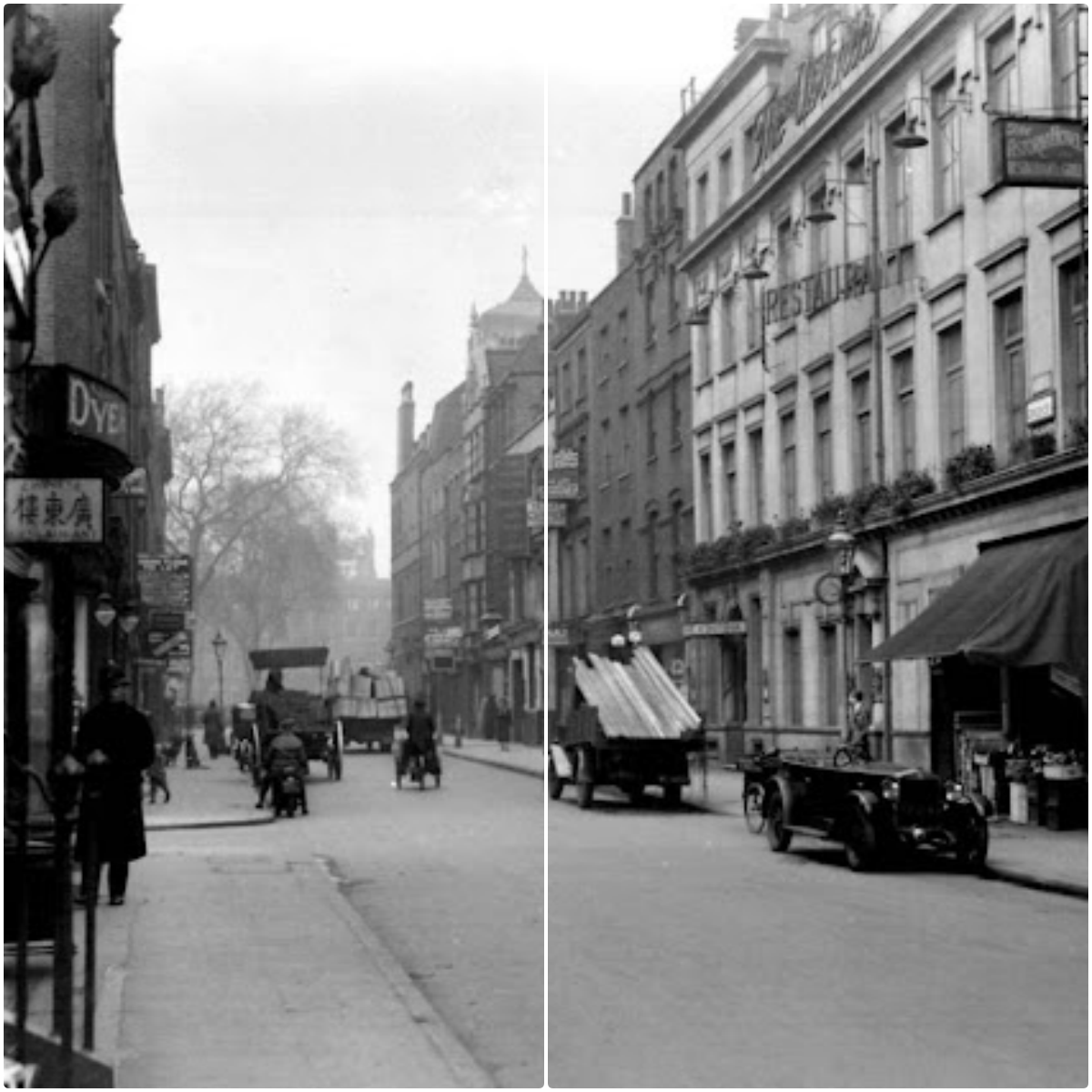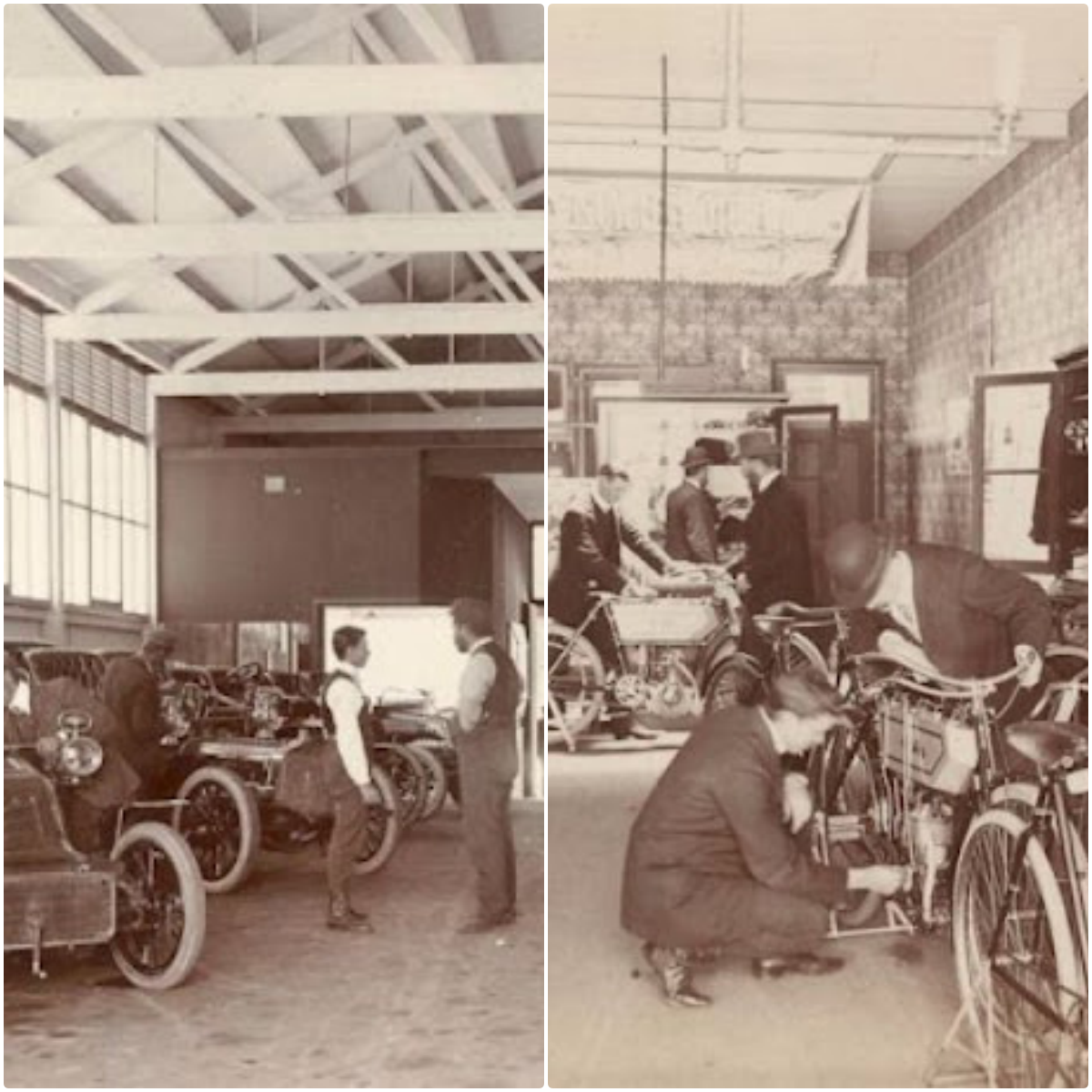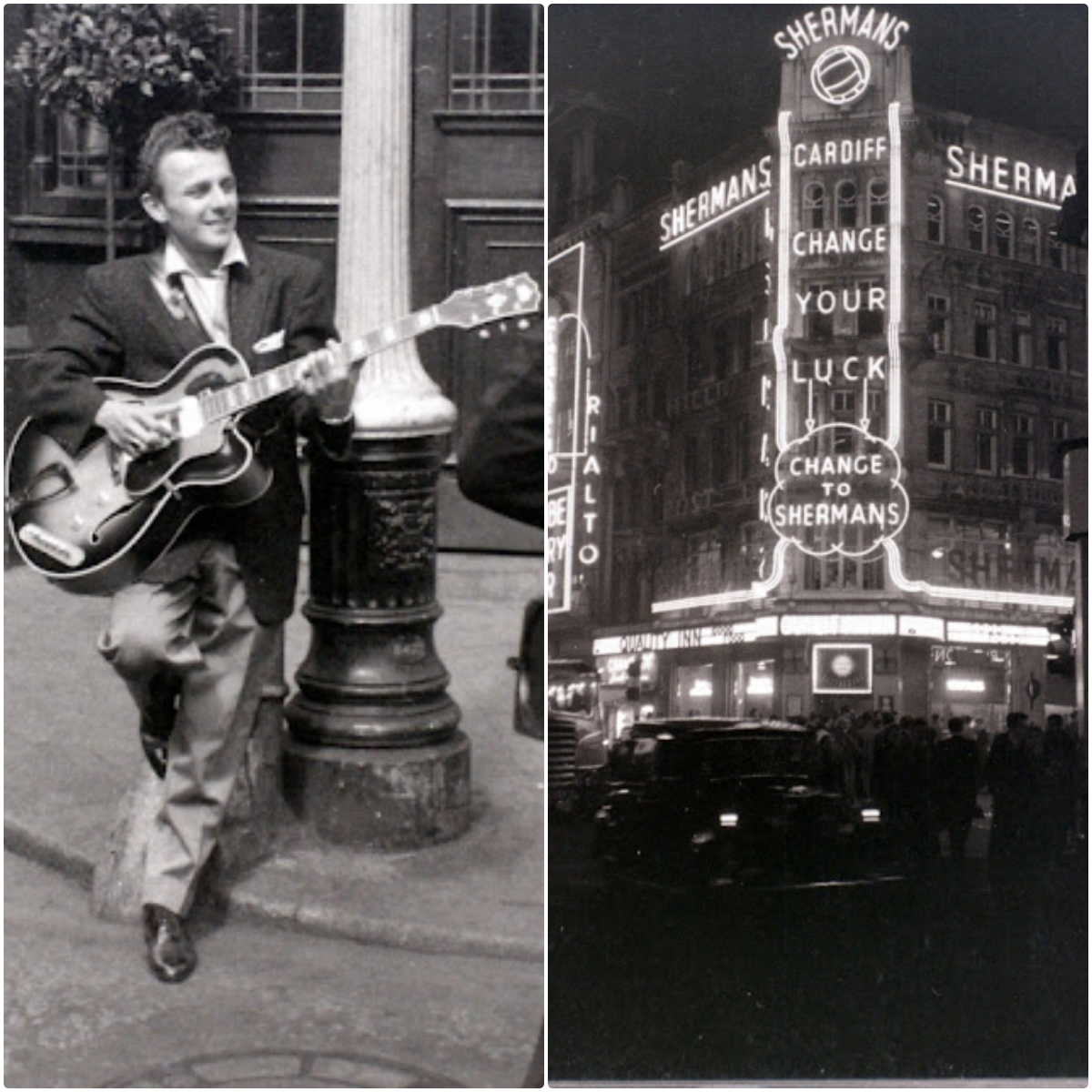In 1938, with the outbreak of World War II on the horizon, Sir John Anderson was placed in charge of air-raid preparations in Britain. He commissioned engineers to design a cheap and simple shelter which could be distributed to the population. The result: the Anderson Shelter.
Six feet tall, 6.5 feet long, and 4.5 feet wide, the corrugated metal shelters were a snug fit for a family of six. They were buried four feet under owners' yards, their arched roofs covered with a layer of soil.
The shelters were distributed for free to poorer residents. Wealthier residents could purchase one for a small fee. According to Mashable, many chose to incorporate the shelters into their gardens, planting vegetables and flowers on top of them. Residents even held competitions for prettiest shelter.

|
| Air raid shelters under construction at a factory in Newport, Wales. Feb. 23, 1939. |
Backyard Bunkers of the Blitz: Pictures of How London Families Lived in Their Backyard Bomb Bunkers During WWII

|
| A man puzzles out how to assemble sheets of corrugated iron into an Anderson air raid shelter in his backyard, 1939. |
Backyard Bunkers of the Blitz: Pictures of How London Families Lived in Their Backyard Bomb Bunkers During WWII

|
| Pig iron is piled on top of an Anderson air raid shelter to test its efficiency and strength, 1939. |
Backyard Bunkers of the Blitz: Pictures of How London Families Lived in Their Backyard Bomb Bunkers During WWII

|
| Neighbors assemble Anderson shelters in their backyards, 1940. |
Backyard Bunkers of the Blitz: Pictures of How London Families Lived in Their Backyard Bomb Bunkers During WWII

|
| A pet rabbit sits on top of the earth covering a family's new Anderson air raid shelter in their garden, c.1940. |
Backyard Bunkers of the Blitz: Pictures of How London Families Lived in Their Backyard Bomb Bunkers During WWII

|
| A woman hangs out her laundry next to the new Anderson air raid shelter in her backyard, c.1940. |
Backyard Bunkers of the Blitz: Pictures of How London Families Lived in Their Backyard Bomb Bunkers During WWII
 |
| The Dallison family leave their Anderson shelter to view the wreckage caused by a nearby bomb explosion the night before, 1940. |
Backyard Bunkers of the Blitz: Pictures of How London Families Lived in Their Backyard Bomb Bunkers During WWII
 |
| A man fashions a blast door for his shelter out of a wooden table, 1940. |
 |
| A decorated Anderson shelter, 1940. |
 |
| The MacKenzie family take shelter during an air raid, 1940. |
Backyard Bunkers of the Blitz: Pictures of How London Families Lived in Their Backyard Bomb Bunkers During WWII
 |
| Actors are recorded for a film about Anderson shelters, 1940. |
 |
| An elaborately decorated Anderson shelter, 1940. |
Backyard Bunkers of the Blitz: Pictures of How London Families Lived in Their Backyard Bomb Bunkers During WWII
 |
| Locals inspect an Anderson shelter next to a bomb crater. Despite the proximity of the blast, the two occupants of the shelter survived with minor bruises. Oct. 26, 1940 |
 |
| Tillz the hen stands outside her own hen-sized Anderson shelter. Nov. 4, 1940. |
Backyard Bunkers of the Blitz: Pictures of How London Families Lived in Their Backyard Bomb Bunkers During WWII
 |
| Alan and Doris Suter step down into their Anderson shelter in London, 1940. |
Backyard Bunkers of the Blitz: Pictures of How London Families Lived in Their Backyard Bomb Bunkers During WWII
 |
| Anderson shelters remain intact following a night of heavy bombing in east London, c.1940. |
 |
| Mr. and Mrs. Murray bed down for the night in their Anderson shelter. Oct. 19, 1940. |
Backyard Bunkers of the Blitz: Pictures of How London Families Lived in Their Backyard Bomb Bunkers During WWII
 |
| A family celebrates Christmas in their Anderson shelter. Dec. 23, 1940. |
Backyard Bunkers of the Blitz: Pictures of How London Families Lived in Their Backyard Bomb Bunkers During WWII
 |
| A Christmas celebration in an Anderson shelter. Dec. 1940. |
 |
| An Anderson shelter remains intact amid devastation in Croydon, c.1942. |
Backyard Bunkers of the Blitz: Pictures of How London Families Lived in Their Backyard Bomb Bunkers During WWII
 |
| A South London resident waters the vegetables planted on the roof of her Anderson shelter, c. 1943. |
Backyard Bunkers of the Blitz: Pictures of How London Families Lived in Their Backyard Bomb Bunkers During WWII

|
| A family inspects their Anderson shelter with a 30-foot-deep bomb crater nearby, 1944. |



